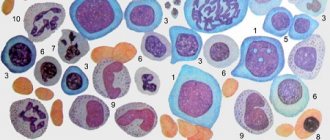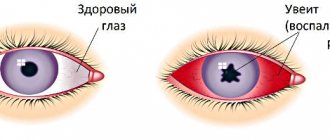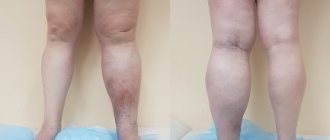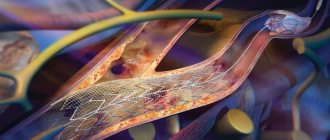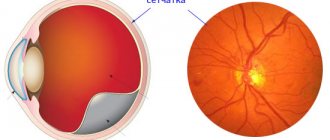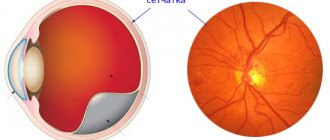Publication date: July 24, 2020
The causes of numbness in the right hand vary. Often this pathology is caused by pathology of the spine, blood vessels, and nerves. The appearance of such a symptom is not always associated with danger to the body. Short-term numbness, especially at night, is often associated with an uncomfortable position at night, during sleep, or with clothes that are too tight. If your hand goes numb often, for no apparent reason, you need to visit a doctor and undergo an examination to find out the cause of the pathology and eliminate it with the help of a specialist.
- Causes
- When should you see a doctor?
- Prevention
- Expert advice
Causes of pathology
Numbness can occur for various reasons. It can be felt while working, sleeping, during the day or night. Considering the duration and frequency of numbness, you can determine what is causing it.
- long exposure to the cold;
- lying for a long time in a too uncomfortable position (this is often caused by the nature of the work);
- wearing bags with hard straps that put pressure on the skin;
- keeping your hand in an awkward position for a long time;
- scalene muscle syndrome, caused by compression of the branches of the brachial plexus and the artery under the collarbone;
- disturbances in the blood supply to the brain due to hypercholesterolemia and hypertension, which impede the flow of blood through the vessels;
- Raynaud's syndrome, expressed in circulatory disorders in small arteries located on the arm (its appearance is influenced by a hereditary factor);
- carpal tunnel disorder, caused by compression of the median nerve in the wrist area, which is caused by the same type of hand movements;
- metabolic disorders (in this case, only the hand goes numb);
- polyneuropathy resulting from deficiency of B vitamins;
- multiple sclerosis (in this case, paresis and numbness of other parts of the body are also observed);
- prolonged depression, severe stress;
- previous uterine fibroids, pneumonia and other diseases that provoke the occurrence of stagnation and adhesions that cause blood flow disturbances.
Diagnostics
Determining the cause of numbness in the fingers is carried out by neurologists. The initial stage of the examination includes a survey, general and neurological examination. The specialist evaluates the appearance of the hand, determines the pulsation of the arteries, examines reflexes, and asks the patient to perform various movements to identify motor disorders. As part of further examination, the following are prescribed:
- Electrophysiological methods
. Electroneurography and electromyography help confirm damage to the nerve trunks, determine its level, extent and severity of the pathological process. - Radiography
. X-ray examination of various parts of the upper limb is prescribed taking into account the nature of neurological disorders, ENG and EMG data indicating the level of damage. The images reveal bone deformations, tumors originating from cartilage and bone tissue, and degenerative changes. - Angiography.
Contrast studies of blood vessels are recommended for signs of Raynaud's syndrome. The method confirms the violation of the uniformity of the lumen of the arteries, the absence of collaterals, and an insufficient number of capillaries. - and MRI.
Performed for suspected diseases and injuries of the spinal cord or brain. They help clarify the location, size and nature of the pathological focus. - Lab tests
. During laboratory diagnostics, specific markers of rheumatic diseases, signs of anemia and hypovitaminosis are determined.
Electroneuromyography
In what cases is it necessary to seek help from specialists?
It is necessary to immediately consult a doctor in cases where the following symptoms are associated with numbness of the hand:
- coordination of movements becomes difficult;
- pain occurs;
- weakness, shortness of breath, and dizziness occur;
- disturbances in speech function are observed;
- sensitivity to temperature decreases.
The occurrence of the above pathologies in combination with numbness of the hand may indicate the presence of a serious pathology that threatens health and life. Therefore, when they appear, you must immediately contact a doctor who will conduct an examination, make a diagnosis and prescribe the necessary treatment.
Symptoms
Symptoms of hand numbness largely depend on the exact cause of this disorder.
Common signs of numbness:
- Weakness in limbs.
- Inability to hold an object.
- Tingling sensation in fingers.
- A crawling sensation.
- The appearance of goose bumps.
- Feeling of coldness of the limb.
If after 2-3 minutes the unpleasant symptoms do not go away, then a pathological cause of numbness can be suspected.
When it develops against the background of diabetes mellitus, the patient will experience symptoms such as:
- Numbness in other parts of the body.
- Extreme thirst, dry mouth.
- Frequent urge to empty the bladder.
- Visual impairment.
If a person has diseases of the joints and spine, then in addition to numbness he will be plagued by symptoms such as:
- Pain in the body and limbs.
- Numbness at night. It occurs even if the sleeping position is comfortable.
- Morning stiffness.
- Weak muscle tone.
- Tingling in the palms.
- Numbness of fingers.
Preventive measures
Hand numbness is much easier to prevent than to cure. For the purpose of prevention, you should follow certain procedures, monitor your diet, not worry about trifles, and adhere to a healthy, proper lifestyle.
In order to improve blood circulation in the arm and prevent the development of pathologies of the cervical spine, it is useful to perform the following exercises:
- Sit on a chair, grab your shoulders with your hands and perform circular movements with your joints ten to fifteen times with successive repetitions.
- Cross your fingers, place them on the back of your head, keeping your elbows at the same level, and then squeeze and spread your joints about fifteen times.
- Stand straight, spread your legs at shoulder level, place your hands on your hips. Perform body turns to the right and left ten times.
- As you inhale, raise your arms up, and as you exhale, gently lower them down.
- Stand straight and turn your head in both directions alternately, then tilt it towards each shoulder ten times.
- Rotate your head first counterclockwise, then in the opposite direction. It is advisable to perform this exercise while sitting, carefully monitoring your well-being.
Why do my fingers go numb?
Numbness and decreased sensitivity in the fingers may be a consequence of the development of neurological disorders and changes in their blood supply, which is caused by vascular pathologies. However, this can also occur as a result of such harmless factors as prolonged stay in an uncomfortable position, which compresses the blood vessels supplying the fingers. This is often observed in the morning when a person has just woken up, especially if during sleep he put his hand under his head or threw them behind it. In such situations, numbness is usually combined with tingling in the fingers of varying strength, as well as a feeling of loss of control over the hands. But all these symptoms go away on their own with the restoration of normal quality of blood circulation in the hands, which takes no more than 10-15 minutes.
Also, one of the physiological causes of numbness in the fingers is prolonged exposure to the cold. As a result of prolonged exposure to low temperatures, blood vessels reflexively contract. This leads to a decrease in the rate of blood circulation in the fingers and the occurrence of characteristic numbness, and sometimes aching pain. This is no longer as harmless as sleeping in an uncomfortable position, since this already indicates the possibility of frostbite on the fingers. Therefore, in such situations, it is necessary to take measures to warm your hands.
But, if your fingers often go numb and this feeling persists for a long time, you should look for the reason in:
- neurological disorders (tunnel syndrome, polyneuropathy, plexitis, etc.);
- traumatic injuries;
- vascular disorders, etc.
Sometimes fingers go numb while taking medications such as Isoniazid, Vincristine, Metronidazole.
Neuropathy, carpal tunnel syndrome and polyneuropathy
As for neurological disorders, a fairly large number of different diseases can manifest themselves in a similar way. First of all, these are neuropathies of various origins. This term refers to damage or compression of one or more nerves of the peripheral nervous system, one of the first symptoms of which is the occurrence of a crawling sensation and numbness. But if in the early stages of development this is observed only periodically, then as the pathology progresses, the fingers become numb more often and longer, pain occurs, changes in the condition of the skin are observed, and the muscles lose tone.
With inflammation of the nerve, bruise, prolonged compression of the arm, for example, with the habit of leaning on the elbows at work, or the action of other isolated factors, local neuropathies or tunnel syndromes may occur. In such cases, in addition to numbness, pain, weakness or awkwardness may be observed when moving or grasping objects with your fingers. The nature of their manifestation directly depends on which of the nerve trunks is damaged. So:
- numbness in the 1st, 2nd and partially in the 3rd fingers is characteristic of damage to the radial nerve;
- numbness of the little finger and ring finger up to half on the palm side and the 4th, 5th and part of the 3rd fingers on the back side is observed with damage to the ulnar nerve;
- numbness of the 1st, 2nd, 3rd and half of the 4th finger on the side of the palm and nails of 2-5 fingers is caused by damage to the median nerve;
- Numbness of 1-3 fingers and weakness when abducting the thumb are characteristic of the most common syndrome of the carpal or carpal tunnel, in which the median nerve is pinched in the flexor muscles of the wrist joint.
Carpal tunnel syndrome occurs in 1% of people and often occurs in those who have to work with a computer for long periods of time.
Fingers can also go numb as a result of the development of polyneuropathies, i.e., with simultaneous damage to a large number of nerves of the peripheral nervous system as a result of the development of certain systemic diseases. In such situations, numbness of the fingers on both hands is observed, and other symptoms characteristic of these pathologies may also appear.
This may be a consequence of diabetes mellitus, in which constantly high blood sugar levels lead to damage to nerve fibers, i.e. the development of diabetic neuropathy. But diabetes is more likely to affect the toes, although the hands can also suffer.
Fingers also become numb during development:
- chronic inflammatory demyelinating polyneuropathy;
- Roussy-Lévy syndrome;
- alcoholism, which led to the emergence of so-called alcoholic polyneuropathy;
- Refsum's disease;
- amyotrophic lateral sclerosis (ALS);
- Guillain-Barre syndrome;
- poisoning with chemicals and heavy metals.
Other neurological disorders
Some diseases can indirectly cause numbness in the fingers, but they are also characterized by a number of other symptoms, which makes it possible to differentiate them from neuropathies. These include:
- Cervical plexitis is a disorder that occurs when the nerves entering the cervical plexus are compressed by enlarged lymph nodes, cervical ribs or spinal structures as a result of the development of spondylosis, osteochondrosis, protrusion or intervertebral disc herniation of the cervical spine. It may also be the result of a birth injury or other damage to the cervical spine.
- Brachial plexitis is a neurological disorder that develops when the nerves that form the brachial plexus are pinched. It can occur as a result of injury to the collarbone, shoulder joint, the formation of an aneurysm (protrusion of the wall of a blood vessel), or a tumor. Sometimes brachial plexitis is observed in people against the background of dysmetabolic or infectious pathologies.
- Horner's syndrome is a neurological disorder that develops in response to damage to the sympathetic nerve fibers of the brachial plexus as a result of tumor formation, aortic aneurysm, thyroid dysfunction, and the development of multiple sclerosis.
Spinal diseases, in particular spondylosis, osteochondrosis, and intervertebral hernias, are among the most common causes of numbness in the fingers.
Injuries
Any bruises, fractures or other injuries to the hands, accompanied by severe swelling, can lead to short-term numbness of the fingers. This is a consequence of compression of the blood vessels by edematous tissue, which temporarily disrupts the blood supply. This can also be observed in the first days after applying a plaster cast to immobilize the injured arm and requires its prompt loosening.
It is extremely rare to observe the occurrence of myofascial compartment syndrome, which is characterized by numbness of the fingers and hands, severe pain that cannot be relieved with traditional non-narcotic drugs. This is a dangerous complication that requires immediate qualified medical care.
Also, numbness in the fingers immediately occurs after open wounds, during which the nerve trunks were damaged. But this is usually combined with noticeable limitations in mobility.
Patients who have suffered traumatic brain or spinal cord injuries often complain that their fingers go numb. At the same time, they have numbness constantly.
Vascular disorders
One of the possible causes of numbness may be hypertension, especially if it occurs without treatment. In such situations, the fingers usually go numb due to the development of swelling of the hands, which is combined with:
- redness of the face;
- increased sweating;
- long-term pain in the heart area.
Another cause of hypoesthesia can be anemia, i.e. a condition in which the number of red blood cells in the blood sharply decreases, and therefore the level of hemoglobin drops. Since this compound is responsible for transporting oxygen to cells, when it is deficient, signs of oxygen starvation are observed:
- feeling of weakness;
- increased fatigue;
- headache;
- decreased appetite;
- increased heart rate;
- shortness of breath even with minor physical exertion;
- decreased concentration;
- dizziness up to loss of consciousness.
Also, numbness in the fingers can be a consequence of a stroke.
Numbness in the fingers is also characteristic of Raynaud's syndrome. This is the name for a disorder in which there is a violation of arterial circulation in the 2nd and 4th fingers under the influence of cold or stress. It is characterized by a paroxysmal course with the initial appearance of a feeling of numbness, coldness and blueness of the fingers, which indicates a decrease in the intensity of blood circulation in them. Then these sensations are replaced by distension, aching pain and burning. When blood circulation is restored and, accordingly, the attack ends, a strong feeling of heat appears in the fingers, and they turn sharply red.
Raynaud's syndrome may be a sign of the development of diseases such as:
- rheumatoid arthritis;
- scleroderma;
- systemic lupus erythematosus;
- damage to the sympathetic ganglia or neurovascular bundles;
- some endocrine diseases;
- blood pathologies.
Less commonly, it occurs against the background of vibration disease and frequent hypothermia.
Expert advice
If your hand begins to go numb, you should pay attention to your lifestyle and habits. Try to move as much as possible, climb the stairs on foot, without an elevator.
Be sure to do exercises in the morning. You can increase physical activity in other ways, for example, through dancing.
Provide your body with the microelements, vitamins and minerals necessary for its proper functioning. Eat more fruits and vegetables, and periodically take special multivitamin complexes.
Try to always remain calm, no matter the situation. By stopping worrying and getting nervous over trifles, you will soon feel better.
Treatment
For each patient, treatment is developed individually based on diagnostic results and detected diseases. In most cases, they begin by prescribing conservative therapy appropriate to the situation. It may include medication, physical therapy and exercise therapy.
Drug treatment may include drugs from different groups. They are selected based on the causes of numbness in the fingers, but they must take into account concomitant diseases, age and other characteristics of the patient. Typically used:
- NSAIDs - prescribed during an exacerbation of neuropathy to reduce the intensity of pain and eliminate swelling of soft tissues;
- corticosteroids - indicated for severe inflammatory processes, as well as complex neuropathy;
- B vitamins - used to improve the transmission of bioelectric impulses along nerve trunks;
- antiplatelet agents - prescribed to reduce blood viscosity and improve blood circulation;
- calcium antagonists - used to increase the lumen of blood vessels, which is indicated for Raynaud's syndrome;
To increase the effectiveness of drug treatment, physiotherapeutic procedures are often used. The most effective for neurological disorders are:
- electrophoresis;
- phonophoresis;
- laser therapy;
- UHF;
- electromyostimulation;
- applications with paraffin;
- ozocrete treatment;
- mud therapy.
To eliminate numbness, an individually developed complex of exercise therapy must be prescribed. It helps to develop the joints of the hands, activate blood circulation and relieve muscle tension. As a result, tissue trophism and innervation of the fingers improves. But exercise therapy should be done systematically, devoting the proper amount of time to gymnastics every day.
How to quickly cure numbness in limbs
If the illness takes you by surprise, then the best solution would be to start getting a massage. Important: massage movements should not be painful. You should start with light strokes, and then add careful work.
A set of exercises to get rid of numbness
You can do gymnastics for prevention or to quickly relieve tension and numbness in the morning. It is better to repeat the set of exercises 3 times a day: morning, afternoon and evening. Guaranteed effect: warming up, stimulating the acceleration of blood flow, relieving spasms.
- Rotate your arms alternately at the shoulder, elbow, and hand. Exercise will help warm up your muscles and stretch your tendons.
- Shake vigorously for a relaxing effect.
- Bend and straighten your fingers while turning your hand upward. The exercise is aimed at improving fine motor skills and helping to restore sensitivity.
- Do a back lock to stretch your muscles and improve blood flow.
- With carpal tunnel syndrome, you can sharply clench your fingers into a fist.
How else can you get rid of numbness in your hands at night?
- Take a contrast shower in the morning. This simple action will not only invigorate and energize you for the rest of the day, but will also gradually strengthen the walls of your blood vessels. A contrast shower quickly helps solve the problem of numbness.
- Drink a glass of warm water before bed; this will warm your body and limbs, reducing the risk of waking up with numb hands.
- Try acupuncture. The treatment method restores metabolic processes and blood flow. The acupuncture procedure must be performed by a professional in a special medical institution, otherwise you will only harm yourself.
- Red thread as one of the folk methods. Medina has not proven in any way that wearing red woolen thread on the wrists helps with hand problems, but many people successfully use this “method”, noting its effectiveness.
Kinds
Before contacting a specialist for qualified help, it is important to determine the type of tingling (the medical definition is paresthesia). Thus, each type of illness speaks of various types of disorders in the body.
- The little finger of the right hand goes numb - the nerves are pinched and cervical osteochondrosis develops.
- Middle finger – damage to the cervical vertebrae of the collar zone occurs.
- Ring finger – if the finger is not pulled over the wedding ring, then muscle strain should be suspected.
- Numbness in the thumbs of the right and left hands - the cause may lie in a basic lack of vitamins, muscle strain or inflammation of the brachial nerve. But you should also be wary of more dangerous diagnoses, namely: pre-stroke condition, disturbances in the functioning of the nervous and cardiac systems.
- The index finger goes numb when the metabolic system does not work properly, or when the nervous system malfunctions due to stress and breakdowns.
- The little finger and ring fingers of the left hand – the functions of the cardiovascular system are impaired.
Which doctor treats hand numbness?
If numbness occurs, you should contact a neurologist. The doctor will examine the patient, clarify his complaints, and evaluate the presence of other neurological signs.
If the doctor deems it necessary, he will refer the patient to other specialized specialists:
- Patients with vasculitis and Raynaud's disease are referred to a rheumatologist.
- People with suspected cardiovascular disease are referred to a cardiologist.
- Patients with diabetes are referred to an endocrinologist.
- Patients with injuries and tumors are referred to a neurosurgeon.
- Patients with infectious diseases are referred to an infectious disease specialist.
- Patients who have been exposed to harmful substances in the workplace are referred to an occupational pathologist.
Approach the issue comprehensively
Numbness may be a symptom of a serious illness. In this case, you can get rid of it only if you cure this disease. The symptom will pass along with the disease.
Sometimes numbness is a consequence of an unhealthy lifestyle and an uncomfortable sleeping position. But don't expect it. that the problem will resolve itself, it is necessary to establish the cause and take care of restoring your own health.
Remember that self-medication and self-diagnosis will not bring anything good into your life. Contact specialists.
Common causes of numbness in fingers at night
- Spasms in muscle tissue, pinching of nerves. The collar area is often overstrained due to a sedentary lifestyle, excessive use of the computer, and uncomfortable sleeping position.
- Impaired blood flow in the vessels. With age, many people develop cholesterol plaques, which provoke the described process.
- Complete damage to the nerve endings of the limbs. One of the most negative outcomes is loss of sensation in the limbs and paralysis.
- Compressed brachial nerve, a common cause is a monotonous, uncomfortable posture when working.
- Raynaud's disease. The limbs become numb and become more sensitive to cold temperatures.
Diagnosing the cause of problems with fingers is difficult and may take several months or even years.
Diet therapy
Along with the main course of treatment, it is necessary to consume healthy foods:
- protein foods (veal, beef liver, chicken);
- vegetables and fruits (potatoes, tomatoes, bananas, citrus fruits);
- fermented milk products;
- different types of fresh herbs;
- natural honey (in small quantities);
- green tea, herbal infusions.
You will need to exclude seasonings, sauces, mayonnaise, and canned food from your diet. It is prohibited to have fatty, spicy foods, baked goods, sweets, and carbonated drinks on the menu.
It is also recommended to minimize the consumption of salt, sugar, coffee, and strong tea.
Rehabilitation and lifestyle restoration
Rehabilitation programs at the CLRC are developed in different directions in order to select the most effective one in each individual case.
- Physiotherapy.
- Manual therapy.
- Reflexology.
- Physiotherapy.
- Massage.
- HILT therapy.
- Shock wave therapy (SWT).
- Electrotherapy (SMT therapy).
- Electrophoresis with Karipazim.
- Dry traction of the spine.
- Laser therapy.
- Rehabilitation after endoprosthetics.
What is carpal tunnel syndrome
If a person’s work requires constant tension in the fingers and hands, then the median nerve of the hand can be pinched, which means the limbs go numb at night, the sensitivity of the wrist decreases, and pain is possible. Professions that require constant hand tension: tennis players, musicians, seamstresses, writers, guitarists, typists, dentists, etc.
The formation of tunnel syndrome is provoked by diabetes, excess weight, kidney failure, alcoholism, injuries, etc.
The phenomenon goes away on its own without any treatment if you allow yourself a long rest.
MESSAGE FROM THE CHIEF DOCTOR:
Often, when examining a patient, doctors pay attention only to the bones, ligaments, and joints. At the same time, nothing is said about muscles
, the function of contraction of which plays a significant role in human life. Weakened muscles lead to thinning and deformed bones.
Unfortunately, common methods of therapy only aggravate the situation, leading to even more severe pain, muscle atrophy and a deterioration in the quality of life of patients.
Effective treatment is impossible to imagine without muscle restoration. Unique kinesitherapy technique
consists in a therapeutic effect, which implies, first of all, muscle activity during the methodical execution of a set of exercises on special simulators.
All exercises are performed by patients sitting or lying down, so there is no excessive stress on the joints and circulatory system, and our instructors-methodologists correct the technique of movements
and monitor the correct execution of actions.
Remember that diseases of the spine and joints are not a death sentence; if the patient wishes and the right approach to treatment, everything can be corrected!

